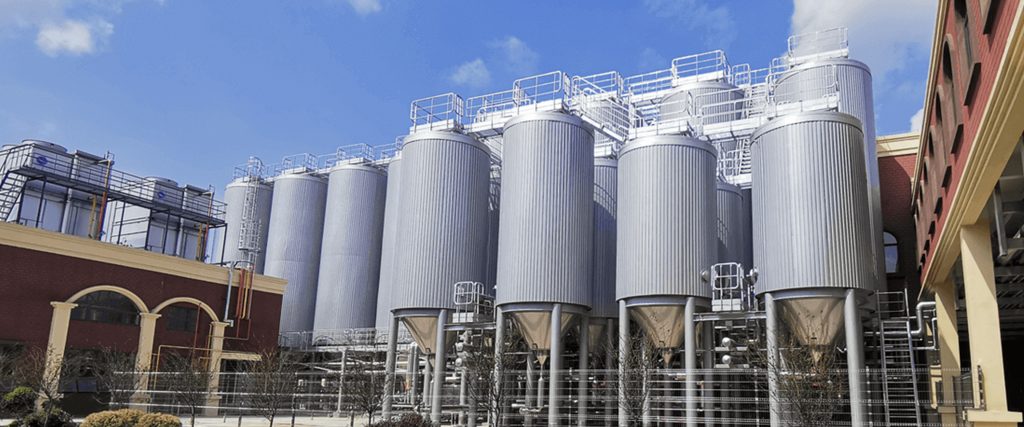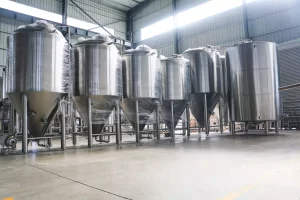How to Start a Craft Brewery: Choosing the Right Craft Beer Equipment for Success.

Starting a craft brewery is an exciting venture, but it requires careful planning and the right equipment to ensure success. From choosing a location to investing in quality craft beer equipment and managing production, every step is crucial. This guide outlines the key aspects to help aspiring brewers turn their passion for beer into a thriving business.
Step 1: Research and Plan Your Brewery
Before diving into brewing, research the craft beer market in your area. Identify your target audience and analyze competitors to find a unique angle for your brewery. Additionally, develop a comprehensive business plan that includes budget estimates, marketing strategies, and growth projections.
Equally important, decide on the type of beer you want to brew. This will determine the type of craft beer equipment and commercial beer brewing equipment you’ll need. For instance, brewing lagers might require additional cooling systems, while experimental beers could call for flexible brewing setups.
Step 2: Secure Funding and Licenses
Craft brewing is a capital-intensive business. You’ll need funding for everything from leasing a space to purchasing high-quality commercial beer brewing equipment. Options include personal savings, small business loans, or finding investors.
At the same time, ensure you obtain all necessary licenses and permits for operating a brewery. These can vary by location, so it’s essential to check local regulations early in the process.
Step 3: Choose the Right Location
The location of your brewery can significantly impact its success. Ideally, choose a space with enough room for brewing, packaging, and storage. Furthermore, consider the customer experience if you plan to include a taproom.
When selecting a site, ensure it meets zoning requirements for breweries and has adequate utilities like water, power, and drainage. Installing craft beer equipment often requires specific infrastructural modifications, so plan accordingly.
Step 4: Invest in High-Quality Brewing Equipment
The cornerstone of any brewery is its equipment. Selecting the right craft beer equipment and commercial beer brewing equipment is essential for consistent, high-quality beer production.
Key equipment includes:
- Mash tun for mashing grains.
- Lauter tun for separating wort.
- Boil kettle for boiling and adding hops.
- Fermenters for fermenting beer.
- Bright tanks for carbonation and storage.
Investing in energy-efficient and durable equipment can reduce operational costs and support sustainability goals. Additionally, scalable systems allow you to expand production as your brewery grows.
Step 5: Develop Unique Beer Recipes
To stand out in the competitive craft beer market, focus on creating distinctive beer recipes. Experiment with different styles, ingredients, and brewing techniques. Having versatile craft beer equipment will make it easier to produce a variety of beers, from IPAs to stouts.
Conduct taste tests with friends, family, or a focus group to refine your recipes. Consistency is key, so ensure your commercial beer brewing equipment can replicate the same quality in every batch.
Step 6: Build a Strong Brand and Marketing Strategy
Craft beer enthusiasts often connect with brands that tell a compelling story. Develop a unique brand identity, including a logo, packaging design, and messaging that resonates with your audience.
Utilize social media, local events, and partnerships with restaurants or bars to promote your brewery. Furthermore, offering tours or hosting events at your brewery can attract more customers and build loyalty.
Step 7: Set Up a Taproom (Optional)
Including a taproom in your brewery can boost revenue and provide direct customer feedback. A well-designed taproom showcases your brewing process, allowing visitors to see your craft beer equipment in action.
Additionally, taprooms can serve as a testing ground for new beer styles before full-scale production. Be sure to create a welcoming atmosphere and offer a variety of seating options to enhance the customer experience.
Step 8: Ensure Quality Control
Maintaining consistent quality is crucial for building a strong reputation. Use your commercial beer brewing equipment effectively to monitor critical parameters such as temperature, pH, and fermentation times.
Regularly clean and maintain your craft beer equipment to prevent contamination and ensure every batch meets your standards. Furthermore, consider investing in lab testing for additional quality assurance.
Step 9: Scale Your Production
As demand for your beer grows, consider expanding your production capacity. Upgrading to larger commercial beer brewing equipment or adding additional systems can help meet higher demand. Additionally, explore distribution opportunities with local bars, restaurants, and retailers to reach a broader audience.
Conclusion
Starting a craft brewery requires a combination of passion, planning, and the right tools. By investing in high-quality craft beer equipment and commercial beer brewing equipment, you can produce consistent, top-quality beer that keeps customers coming back. Moreover, building a strong brand, engaging with your community, and maintaining strict quality control will set your brewery apart in a competitive market.
Take the first step today and turn your brewing dreams into reality!
https://www.tcbrewbeer.com/en/two-vessel-brewhouse-4000l/
Related recommendations
Starting a Brewery Business Plan: Your Ultimate Guide to Crafting Success
179Starting a brewery business plan
View detailsTurnkey Brewing Systems: The Ultimate Guide for Aspiring Brewers
320Discover how Turnkey Brewing System simplify the brewing process and ensure professional results.
View detailsHow to Master Brewery Planning: Calculate the Ideal Brewery Size for Your Craft Beer Business
180Learn how to calculate the ideal brewery size for your craft beer business with expert tips on brewery planning, equipment space, and efficient layouts.
View detailsHow to Reduce Brewing Costs Without Compromising Quality
139Discover how Tonsen’s stainless steel brew equipment reduces brewing costs while maintaining high-quality beer. Efficient, durable, and cost-effective solutions.
View details
 Shandong Tonsenbrew Co., Ltd.
Shandong Tonsenbrew Co., Ltd.





HelloPlease log in